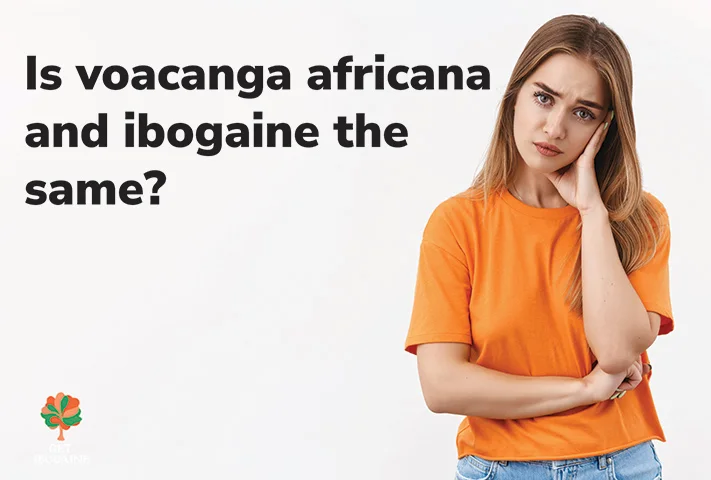For centuries, shamans and healers have utilized the potent plant voacanga to access altered states of consciousness, unlocking profound insights and transformative experiences. Visionary experiences using voacanga are not mere hallucinations but a doorway to a deeper understanding of the self, the universe, and the interconnectedness of all things.
This article delves into the ancient wisdom surrounding voacanga, exploring its unique properties and the profound journeys it can facilitate. Prepare to embark on a journey of self-discovery, guided by the ancient knowledge of shamans and the power of this extraordinary plant.
Table of Contents
The tree of knowledge
The word voacanga means “the tree of knowledge” in the Bantu language of Central Africa.
Shamans may use this plant when they want to communicate with their ancestors or journey into the spirit world so that they can find answers about the pros facing their communities.
Shamans use this substance for healing, divination (to predict the future), and communicating with other spiritual beings like angels or gods (and sometimes even demons).
How do shamans take Voacanga to induce visionary experiences?
One way of doing this is by chewing the seeds and leaves of Voacanga. The shamans take them in three ways: chewed, smoked, or prepared into tea.
The first method involves the shaman chewing the seeds until they form a thick liquid, which they then swallow.
Chewing releases an alkaloid called N-methyltyramine, which causes an increase in blood pressure and heart rate, making it more difficult for shamans to fall asleep at night.
It also leads to nausea, dizziness, and vomiting, which last for several hours after ingestion (this can be avoided by adding herbs such as ginger).
However, once these symptoms subside, there is typically a feeling of euphoria for between 2 and 3 hours before returning to normal.
Smoking Voacanga leaves works similarly. The active ingredients are absorbed through mucous membranes in the lungs when inhaled with smoke from burning leaves or wood shavings from cut branches of Voacanga trees.

The Voacanga Experience
First, it’s important to understand that Voacanga’s visionary experience is not a dream. But it’s also not quite a hallucination, at least not in the sense that you might think of when you hear the word “hallucination.” So, what is it?
Simply put, It’s more like a waking dream than anything else. You’ll feel more awake than when you’re sleeping, but simultaneously, your mind and body seem to have separated somehow.
During a Voacanga experience, your eyes will be open, but you may feel paralyzed and unable to move (though this isn’t always true).
People report seeing things in front of them that aren’t there physically; for example, I once saw horses running alongside me on a path through the woods where there weren’t any horses!
The experiences can differ from person to person, depending on personality and background. Still, they usually involve hallucinations or sensory distortions, such as hearing colors or feeling sounds as tactile sensations (like touching something cold).
How far away are we from taking visionary experiences seriously and using them as a tool for self-improvement, and spiritual and emotional growth?
Visionary experiences are a great tool for exploring spiritual and emotional growth.
They can help you get to know yourself better and discover what you need to work on to develop yourself further.
However, to use these visions as a tool for personal growth and self-improvement, it’s important to have them and learn how they happen.
If people don’t understand their visionaries well enough, it could lead them down the wrong path by making them think that any vision is good enough or that anything goes wrong when inducing visionary experiences with drugs.
Explore your subconscious mind.
If you want to explore your subconscious and the mystical powers it contains.
A variety of drugs have been developed over the years to alter a person’s consciousness, but one of the most effective ones is called Voacanga.
Voacanga has been used for centuries by shamans and other spiritual practitioners who want to induce visionary experiences, sometimes mystical ones, to see what lies beyond this world.
Conclusion: Visionary experiences using voacanga
The shamans of the Voacanga-using cultures believe in the power of their medicine and use it to connect with a higher level of consciousness.
The experience is usually described as one of heightened awareness, including a sense of internal connection and harmony with nature.
This is very similar to what other cultures report about their use of psychedelic plants like Ayahuasca or Iboga root bark.
Related: Is Voacanga Same as ibogaine?
Helpful Resources
1. National Institute on Drug Abuse (NIDA): NIDA is a government-funded research organization that provides information and resources on addiction and substance abuse. Their website offers resources specifically tailored to the pandemic, including information on telehealth and online support groups.
2. Substance Abuse and Mental Health Services Administration (SAMHSA): SAMHSA is a government agency that provides information and resources on addiction and mental health. Their website offers resources specifically tailored to the pandemic, including a national helpline for individuals who are struggling with addiction or mental health issues.
3. Alcoholics Anonymous (AA): AA is a support group for individuals struggling with alcohol addiction. AA has moved many of its meetings online, providing a safe and accessible way for individuals to connect with others who understand their struggles.
4. Narcotics Anonymous (NA): NA is a support group for individuals struggling with drug addiction. Like AA, NA has moved many of its meetings online, providing a safe and accessible way for individuals to connect with others who understand their struggles.
5. Mental health professionals: Mental health professionals such as therapists and counselors can provide individualized support and guidance for individuals struggling with addiction during the pandemic. Many mental health professionals offer teletherapy, a form of therapy conducted over the phone or through video conferencing.


